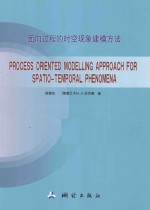

面向过程的时空现象建模方法 英文PDF电子书下载
- 电子书积分:8 积分如何计算积分?
- 作 者:徐爱功,(斯里兰卡)A.H.拉克曼著
- 出 版 社:北京:测绘出版社
- 出版年份:2013
- ISBN:9787503032233
- 页数:143 页
Chapter 1 Introduction 1
1.1 Scope of the Research 4
1.2 Objectives 5
1.3 Research Questions 6
1.4 Motivation 8
Chapter 2 Theoretical Review 10
2.1 Introduction 10
2.2 Abstraction of Reality 11
2.3 Stages in the Development of Spatio-temporal Modelling 16
2.4 Underlying Approaches 23
2.5 Spatio-temporal Holes 33
2.6 Teleporting to Ontological World 35
Chapter 3 Ontological Foundation 36
3.1 Introduction 36
3.2 Process 36
3.3 Ontological Foundation for the Spatio-temporal Phenomenon 41
3.4 Introduction to П-Calculus Language 44
3.5 П-Calculus for Phenomenal Decomposed Elements 47
3.6 Concluding Part Ⅰ 52
Chapter 4 Conceptual Model 53
4.1 Introduction 53
4.2 Tightening Some Conceptual Screws 53
4.3 Spatio-Temporal Process Model Structure 54
4.4 Model Behaviour 58
4.5 Mechanism of the Model Introduction to Spatio-temporal Extended П-calculus 59
4.6 Model Output Process Queries 63
4.7 Towards the Model Interpretation 65
Chapter 5 Model Interpretation 66
5.1 Introduction 66
5.2 Modelling Environment 66
5.3 Modelling Structure 66
5.4 Conceptual Model Simulation 72
5.5 Preamble to the Expediency 90
Chapter 6 Applicability of STPM 91
6.1 Introduction 91
6.2 How Natural are Natural Hazards? 91
6.3 Simulation of Natural Hazards 92
6.4 Concluding Remarks 100
Chapter 7 Logical Process Modelling 101
7.1 Introduction 101
7.2 Introduction to UML-RT 101
7.3 Logical Schema of STPM Structural Architecture 104
7.4 Logical Schema of STPM Behavioural Architecture 108
7.5 Logical Model Simulation 114
7.6 Conclusion 122
Chapter 8 Implementation Pathway 123
8.1 Introduction 123
8.2 Declaration of Model Primitives 124
8.3 Declaration of Model Behaviours 125
8.4 Identified Iimitations 127
8.5 Concluding Part 127
Chapter 9 Conclusions and Recommendations 129
9.1 Conclusions 129
9.2 Recommendations 131
References 132
Nomenclature 143
- 《催化剂制备过程技术》韩勇责任编辑;(中国)张继光 2019
- 《绿色过程工程与清洁生产技术 张懿院士论文集精选 上》《绿色过程工程与清洁生产技术》编写组编 2019
- 《化工传递过程导论 第2版》阎建民,刘辉 2020
- 《钢铁行业污染特征与全过程控制技术研究》周长波等 2019
- 《面向可持续发展的马克思主义经济科学研究》刘正刚,李晓,田军著 2018
- 《钢铁烧结烟气多污染物过程控制原理与新技术》甘敏,范晓慧著 2019
- 《食品过程工程》赵黎明主编 2020
- 《面向工程教育的本科计算机类专业系列教材 普通高等教育“十一五”国家级规划教材 计算机网络 第3版》胡亮,徐高潮,魏晓辉,车喜龙编 2018
- 《一场穿越时空的探险》(德)克里斯托夫·林登贝格,董航 2019
- 《大数据建模方法》张平文,戴文渊,黄晶编著 2019
- 《指向核心素养 北京十一学校名师教学设计 英语 七年级 上 配人教版》周志英总主编 2019
- 《北京生态环境保护》《北京环境保护丛书》编委会编著 2018
- 《指向核心素养 北京十一学校名师教学设计 英语 九年级 上 配人教版》周志英总主编 2019
- 《高等院校旅游专业系列教材 旅游企业岗位培训系列教材 新编北京导游英语》杨昆,鄢莉,谭明华 2019
- 《中国十大出版家》王震,贺越明著 1991
- 《近代民营出版机构的英语函授教育 以“商务、中华、开明”函授学校为个案 1915年-1946年版》丁伟 2017
- 《指向核心素养 北京十一学校名师教学设计 数学 九年级 上 配人教版》周志英总主编 2019
- 《西单大杂院-北京老舍文学院首届中青年作家高研班学员小说作品集》北京老舍文学院编 2019
- 《指向核心素养 北京十一学校名师教学设计 数学 七年级 上 配人教版》周志英总主编 2019
- 《国之重器出版工程 云化虚拟现实技术与应用》熊华平 2019
